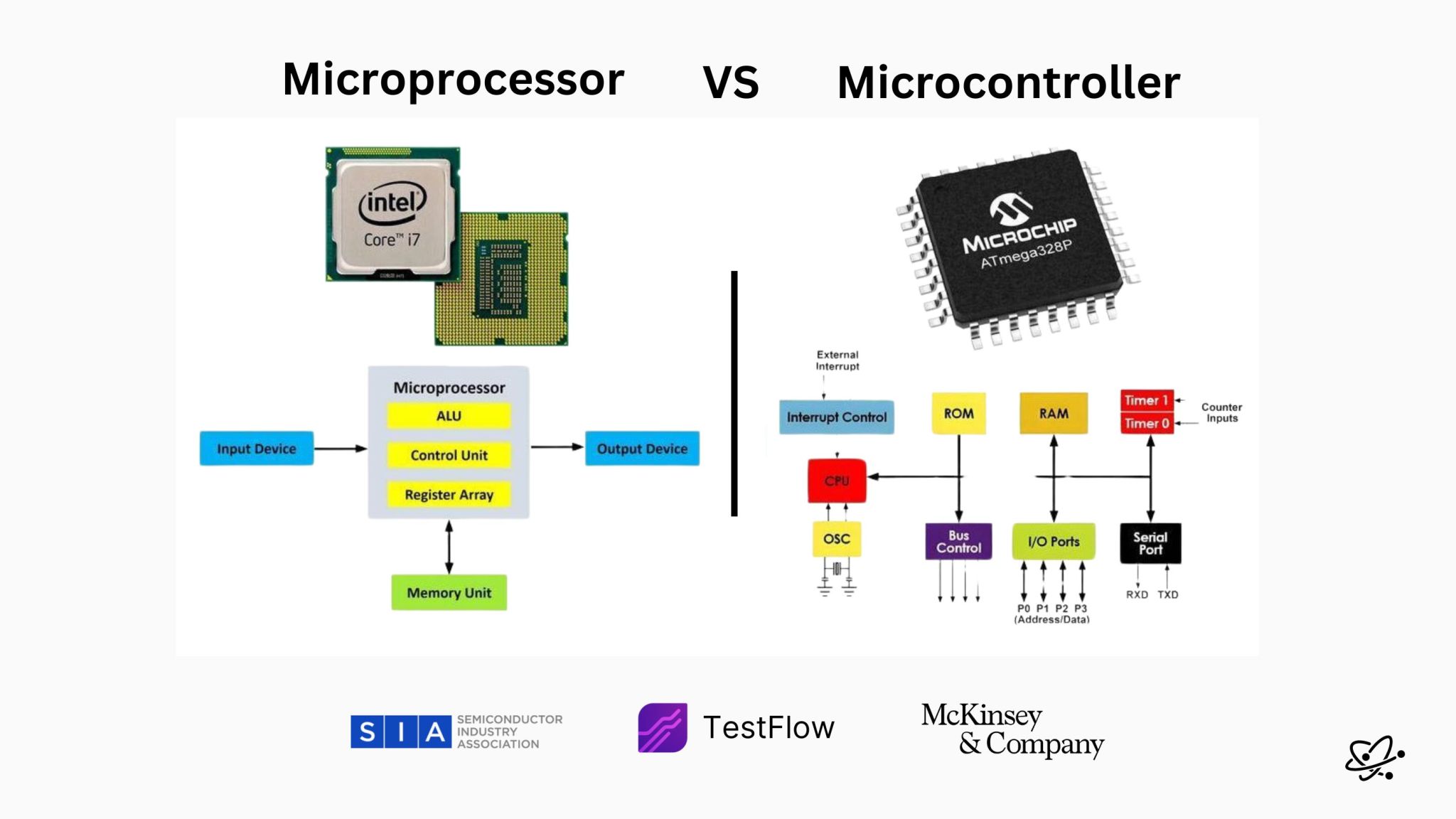They're both called the "brain" of electronic systems, but microprocessors and microcontrollers serve very different roles in the technology ecosystem. Understanding their differences is crucial for designing, debugging, or investing in embedded hardware systems.
The Simple Distinction
Here's the simplest way to think about the fundamental difference between microprocessors and microcontrollers:
Microprocessor
General-purpose compute engine
Designed to handle everything from operating systems to complex applications, but requires external components (RAM, storage, I/O) to function as a complete system.
Microcontroller
Specialized task controller with built-in peripherals
Self-contained system optimized for specific control tasks, with integrated RAM, storage, timers, and I/O interfaces all on a single chip.
The House Building Analogy
Imagine you're building a house. This analogy perfectly captures the fundamental difference between these two technologies:
Microprocessor = The Architect's Blueprint
The microprocessor is like a comprehensive architectural plan—incredibly detailed and capable of handling any type of construction project. However, it needs contractors, workers, and specialized equipment (external components) to actually build the house.
Microcontroller = Smart Thermostat
The microcontroller is like a smart thermostat or smoke detector—self-contained, optimized for a specific task, and ready to plug in and work immediately without additional infrastructure.
Detailed Technical Comparison
Let's break down the specific characteristics and use cases for each technology:
| Aspect | Microprocessor | Microcontroller |
|---|---|---|
| Primary Use | PCs, smartphones, servers | Embedded systems, appliances, IoT |
| Software | Operating systems, complex applications | Simple control loops, firmware |
| Memory | Requires external RAM and storage | Built-in RAM, Flash, and EEPROM |
| Peripherals | No built-in peripherals | Integrated timers, ADCs, GPIO, UART |
| Examples | Intel Core, AMD Ryzen, Apple M-series | STM32, Atmel AVR, PIC, TI MSP430 |
Key Takeaway: Choose the Right Tool
The fundamental rule is simple:
Microprocessors run your laptop.
Microcontrollers run your coffee machine.
And both are essential to the modern technology stack.

TestFlow: Universal Validation Platform
AI-powered validation that adapts to both high-performance microprocessors and resource-constrained microcontrollers
Validate Both Architectures with TestFlow
Whether you're developing high-performance microprocessors or power-efficient microcontrollers, TestFlow's AI-powered platform adapts to your validation needs, ensuring reliable performance across all architectures.
